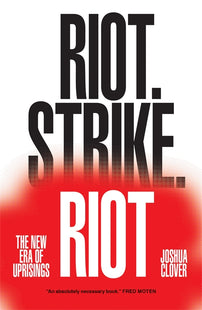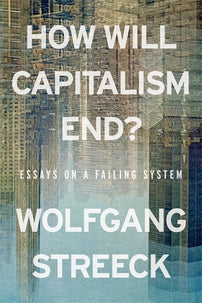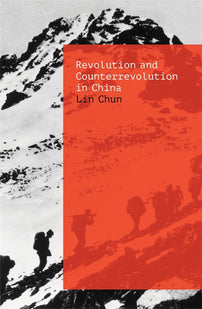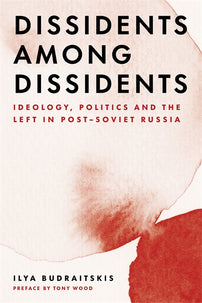Static and Signal: Part One
Since the beginning of the pandemic, and the string of extraordinary and increasingly everyday global events that have come along with it, many have diagnosed the end of neoliberalism and the birth pangs of something new rising in its stead. In the first of a two part series, Joshua Clover and Nikhil Pal Singh map the present conjuncture and search for answers in the rubble of global capitalism.

Has neoliberalism ended? Peering out from the North Atlantic imperial core as recently as last spring, there seemed reason at least to float the possibility.
In trying to think about the politics of the present (with all the limitations that phrase implies), the dramatic events, shifting tides, and revelations of the past two years certainly propose something like a break, or at least a segue. Time and scale are always puzzles. In weighing this possible transition, or at least window of dramatic change, is the period in question “the pandemic,” as it sometimes seems? We are two years into a 100-year storm, with all the historical tidiness that suggests. Much has happened since April 2020, when mass death, belatedly grasped as borne on air, synchronized across the world. In the ensuing array of events, some were simply contemporaneous, but most exposed existing weakness: complex interdependencies under duress, lines of social fracture already at a breaking point.
We might identify several in turn: a geopolitics of labor arbitrage and constricted technology transfer held in place by a planetary web of supply chains linking cheap labor and cheap resources to value-added zones and far-off purchasing power, its fragility exposed by the long winter of contagion. Or deindustrializing labor markets, already defined by divergence between wealthy professionals and precarious gig proles (the two class fragments granted the seasonal stage names “Work From Home” and “Essential Workers”), seeming to collapse and remake themselves under the heading of “the Great Resignation.” Or government income support and debt payment moratoriums that seemed to waive decades of austerity doxa. Now add to this such epochal events as the George Floyd Uprising, and to that its travesty, the January 6th pseudo-coup — the noisiest happenings of the pandemic in the US, but also signals, appropriately chaotic and admittedly weak, of the break that the pandemic purported.
Tuning clear signals from static, charting the sea-change from transitory waves, remains challenging, however. These last events, for example, are more plausibly located within the passage that was the Trump presidency itself, persistently figured as a kind of break, its trail of broken norms purportedly demarcating the end of some former comity and arc of progress. Said presidency is nested within the grim restoration of manifold white nationalisms of yore; said restoration is nested in turn within, but not adequately explained by the late arrival of declining life chances for most everyone save the Chinese masses, on the doorsteps of white America. This offers a marginally different timing for the break, with the U.S. as the ticking clock or perhaps ticking time bomb — but all the more significant for that, capturing the derangement long flowing outward and now refluxing finally into the sclerotic heart of hegemony. If the neoliberal era names inflationary pressures, political, moral, and economic that needed taming (and then breaking, along with the American worker’s standard of living, as Volcker famously admitted), what does the return of inflationary events and pressures suggest today? In the regions treated as precursor and laboratory for the Chicago Boys and Washington Consensus, the Pink Tide is renascent after a seeming ebb; meanwhile attritional war wages in the heart of Europe for the first time since the Pax Americana. Given all of this and more, it seemed sensible enough to wonder, at least, whether we were at the threshold of something new. Especially given that the “and more” features, at its very heart, the obvious fact that neoliberalism had given forth whatever it had to give and there was nothing left. There was no imaginable reason why it would — or how it could — continue.
But if Team We’re Finally Over It appeared to be in ascendancy a year ago, it was not the future quite yet. By the time we arrived at that incomparable allegory of impasse — Evergiven’s sojourn in the Suez — Team It’s Still Neoliberalism To Me was making a comeback. It is always safer to take a nothing new under the sun stance and pass yourself off as wise.
We must admit they have a point. While there is no shortage of cliff-hanging horrors to list — among which we might open with wholesale economic rubble; atavistic nationalisms, mass indifference to mass death, ground war entering stage right with nukes in the wings, Mediterranean heat in the Arctic while courageous politicians stamp DRILL BABY DRILL on the latest IPCC report — for all of this, the phantasmatic denunciations from on high of tight labor markets, profligate government spending, and rising crime, even as Russian oil, gas and bond payments continue to float the West’s shrinking kingdom, suggest there hasn’t been much of a break at all. But this is largely because (to come round again to the place from which we always meant to begin) there was actually nothing to break with. Or at least nothing like what the common wisdom suggested.
The Big Nothing
Have we entered a new dispensation? As is reliably the case, the problem is not the answer but the question. The debate itself risks mystifying actual conditions.
At worst, neoliberalism as an explanatory concept promised a kind of conscious coordination, a world-picture imposed from the heights of Mt. Pelerin and the lowlands of the Tidal Basin. At best, it registered that something had indeed changed with the collapse of the postwar economic entente, but that it was more an emergent character of the era, the kind of unconscious coordination that Hayek once promised on behalf of the market. It proposed a world of isolated needs and desires, demands, interests, but one that still had — mystery of mysteries — a kind of unity and direction that was the sum of those fragments. Terrible, obviously. Filled with headwinds, self-evidently. But even those headwinds, we were given to understand, afforded a kind of unity, as they obliged us all the more to prostrate ourselves so as to avoid the sharpest gusts. A generation low to the ground. It was a misery — but at least it existed, it was knowable, it had a name. “The Neoliberal Order,” as article after article named it, triumphally and then with growing despair, gesturing broadly toward some whole whose character was immanent but never quite appeared.
It may be however that the most catastrophic feature of neoliberalism was the belief that it was a thing. It was not. It was not an order. While it certainly had durable features: capital’s urge to break worker power, say, or the ruthless march into all quarters of atomizing market logic, these cannot provide a particular period’s internal logic. They are inbuilt to capitalism: there at the beginning, there at the end. If “neoliberalism” describes a certain level of development for these features (and we are not sure it does even that) it cannot simultaneously explain how they reached those levels. Meanwhile, what seems increasingly clear to us is that the span was characterized by no particular social coordination conscious or automatic, liberatory or maleficent. Neither capital nor its antagonists had a plan, really. “The new spirit of capitalism” was attrition, extraction, and exhaustion. Growth ended and stayed ended. For all the chitchat about hyperpartisanship and polarization, the center endured, a gray parade of necromancers one after the next pretending to raise accumulation from the dead. There was a bunch of path dependency. It further immiserated a vast portion of a largely immiserated world. The last couple of years have absolutely felt like a kind of passage. And yet: volatility has given onto volatility, impasse onto impasse.
This recognition is prelude, but a necessary one. There is no new dispensation because there was no old one, not to speak of. There was fifty years of watching the greatest predators pick through the rubble, plundering what remained and hoovering it up into the penthouse without creating enough value to keep capital itself stable. Nothing that is not there and the nothing that is, the poet wrote. This is the world since 1965.
We do not say this to suggest that there is no enemy and no struggle to be had, that there is no history and no ground. The opposite, in truth. We need to reconceive of that struggle’s form and character, of our historical position. The prevailing logic across a great breadth of the political spectrum, from classical liberals leftward, shares two entangled features that we think will need to be left behind. They appear sometimes explicitly, sometimes as unstated presuppositions.
The first is the operation, perhaps inevitable but all too often uninspected, of drawing explanatory analogies from past moments that share with the present a similar shape, a homology, but cannot have the same dynamic or play of forces. We can say over and over that this moment is like 1848, or 1870, or 1914, or 1937. We will be wrong, decisively wrong, every time. The line going up cannot explain the line going down, even though it is topologically inevitable that there is a point on each line at the exact same height.
[book-strip index="1" style="display"]The second, inseparable from the first, is the understanding that history remains progressive, in the sense that there is something developmental within an old era from which the potentially redemptive new will be born, even if there is a monstrous interregnum between. There will be an overcoming. The current state of affairs will be broken apart and reformed at a higher level, reversing the powers to hand against the very forces that developed them. That is one story, not the best, told about “the dialectic.” More concretely, it is the story told by any number of liberal and progressive movements that depend for their image of a better social order on growth of one kind or another — of social wealth, productive power, the workforce, an ascending moral arc, et cetera.
What marks our time however, in ways that are distinct from earlier structurations of a capitalism founded in colonial settlement and imperial expansion, are the hard limits that take such solutions off the table. Capitalist growth even at its best depended on immiseration and on brutally imposed value transfer from some precincts to others; not even that is on offer. Plunder continues, as does concentration of extant value. Nonetheless, the staggered but startling accumulation that accompanied the industrial revolutions now seems in the past. Solutions premised on such growth, economic dynamism, grand investment in desirable technologies, are not forthcoming.
That is one limit. The other shares with it a provenance. Steadily improving procedures for dating the appearance of anthropogenic climate change now locate it within a few years of the Boulton and Watt steam engine. The actualities of climate collapse provide even harder limits to growth than does the self-undermining character of surplus-value production, and leave us even more decisively without past coordinates by which to measure the present.
These are the impasses of the present, and have been for some time. It might be argued that this position is a sort of “declinism”; who could argue? But for this to be a meaningful criticism, one must suppose that the way forward requires, somehow, believing that a future more emancipated because more productive is still possible. The way out, alas, does not pass through beliefs but actualities.
The Forever Cold War
Liberalism, within which we include the great majority of conservatives, cannot resist looking back to the Cold War to envision a path forward. This is the core of its nostalgia. It is perhaps generous to use that term for the act of casting about in an alien past for solutions to the puzzles of the present. But nostalgia is a kind of fantasy, albeit one that abandons what is most utopian about fantasy: the possibility of a break.
The U.S. Cold War competition with the Soviet Union promoted a strategic framework for a post-WWII political economy of growth that accommodated both decolonization abroad and pressures for civil and economic reform at home. In this conception, a US-centered halfworld arrayed against Soviet dictatorship offered to “lift all boats” through the spread and enlightened superintendence of capitalism at a world-scale. The US welfare-warfare compromise sought to match preponderant global military power, with a moral challenge of rising social equality and living standards through class compromise and the elimination of coercive governance defined by claims of racial and civilizational superiority. The Cold War in this way promised a virtuous defile of global peace and domestic prosperity under benign US leadership. This vision was invariably contradicted and repeatedly contravened whenever domestic and overseas populations rejected US preferences, or demanded more than what was on offer. Wars, coups, riots, and assassinations followed in short order, resulting in millions of deaths from Latin America to Southeast Asia to the South Side of Los Angeles.
The catastrophes of the Vietnam War, the late 1960s urban uprisings that rocked hundreds of US cities, and the energy shock of the early 1970s shortly thereafter, demonstrated the failures of the Cold War synthesis. So should it have ended… Instead, the progressive elite consensus that supported an economy of growth and a “long peace” gave way to a more bellicose vision of the United States in opposition to aspirations for a New International Economic Order, and to class and racial compromise at home. Ronald Reagan engineered this shift by promising to hotten up the Cold War, and was ultimately credited with winning it. A decade later, the first large-scale US military intervention in the Persian Gulf buried the “Vietnam syndrome” under the banner of a “new world order.” US adventurism in Iraq and Afghanistan followed, on the premise that 9/11 created what National Security Advisor Condoleezza Rice termed “a moment of opportunity” to permanently reorder geopolitics via US control over the world’s energy heartlands. The underlying goals remained as they ever were, in the conception of George Kennan: to leverage military power in the interest of long-term economic disparity without “positive detriment” to US national security.
The global war on terror, that is to say, that recent but no longer new transmogrification of Cold War politics, was accompanied by an ever more desiccated social reality. If Lyndon Johnson’s declaration of a “war on poverty” in 1965 was the domestic US culmination of the postwar welfare-warfare entente, underwritten by a promise of black inclusion in the “affluent society,” then the almost simultaneous declaration of a “war on crime” began metastasizing the world’s largest gulag archipelago. “Who needs the Negro?” sociologist Sidney Wilhelm wondered, suggesting that blacks surplus to a declining economy were about “to go the way of the American Indian.” “No justice, no peace,” would become the new incantation. The war of attrition was just beginning.
Here we reach bedrock — not of industrial capitalism understood as a virtuous spiral of self-expanding growth, but settler capitalism, under the sway of accumulation’s demands but returned to zero-sum thuggery, defined by the art of swindle and the force of direct seizure. What if in the ragged present we find once again colonial capitalism and imperial rivalry, not as a past moment with its possibilities but as the taking up of techniques for preserving a domination that has no future cached within it? The point here is that the recent market-state was not only a destitution but a parasitic growth on the national social and developmental state. This was an outcome, moreover, that resulted from the prior failure of the developmentalist project’s universalization — crumbling first overseas and then domestically, inside the U.S. itself.
It is in this regard that we might see most clearly how the “neoliberal era” lacked the particularity once claimed for it. The essence of U.S. overseas “development” policy, from Latin America to Southeast Asia, operated from the outset by prioritizing new forms of police assistance, state decentralization, private delegation, and austere systems of social welfare provision, where US advisors sought to reconstruct entire countries in a manner that would feed the global centers of capital accumulation. The jagged and slow-motion tattering of this arrangement both predicts and expresses the larger motion we have been trying to grasp, one that leads us into the glare of the present.
Tensions between China and the West have mounted as China has sought to become more than just workshop for U.S. corporations and beneficiary of global labor arbitrage. From the standpoint of U.S. elites, this has meant the foreclosure of the more-than-century-long dream that China’s markets would ultimately be theirs — a loss that has in recent years reanimated the founding grievance of the U.S. far right which emerged on the world scene at the onset of the Cold War, raging over “the loss of China.” By virtue of evading incorporation into the West’s colonial sphere, and retaining relative autonomy with respect to the U.S. Cold War imperium, China leveled up from a GDP equivalent to Haiti and Sudan in 1980 to become the world’s second largest economy in 2010, a staggering achievement.
As the US waged by some estimates an eight trillion dollar war in Iraq and Afghanistan, tossing another trillion at the failed F-35 fighter jet program, China spent less than one-fifth of that amount on its Belt and Road initiative, whose members now comprise almost 50% of the world economy. While the outcome of China as a successor hegemon to the US at a global scale remains doubtful, it remains perforce an aspiration, and it is in those terms that both Chinese and U.S. elites view matters at present. As President Biden put matters recently, China has “an overall goal to become the leading country in the world, the wealthiest country in the world and the most powerful country in the world. That’s not going to happen on my watch.” Perhaps Trump’s greatest achievement will be the long sought-after post-Cold war operational nemesis rooted in a bipartisan consensus around China as the main geostrategic threat to “the American way of life.” In turn, the central geopolitical question of the coming period will be whether the U.S. and China can maintain peaceful accommodation in the face of diverging technological systems, differentiated governance, and capital markets. It will be a period of ugly adjustments, shrouded by planetary ecological catastrophe.
Some will be tempted in the face of the most recent events to suppose that the Russian invasion of Ukraine will change the narrative, restoring credibility to U.S. global leadership and martial purpose, particularly in concert with Europe. With Germany poised to deliver an unprecedented increase of one hundred billion euros in military spending over the next decade, with the demonstrated ability to coordinate economic sanctions and moral resolve matching similar degrees of financial crisis management under the auspices of the US Federal Reserve, the West undoubtedly retains agentive primacy. What now appears to be Russian adventurism, set alongside typical Chinese quiescence (to say nothing of transactional dealing for Venezuelan and Iranian oil) exposes claims about rising revisionist powers as paranoid nonsense. But neither will Cold War nostalgia restore the West’s shrinking kingdom. Russian militarism may be the straw that breaks decades of austerity dogmatism in Europe, but it is also more likely to accelerate geopolitical fragmentation of a cohesion already attenuated by the Eurozone’s zero-sum drawing of wealth from its periphery to its core wherein, in the words of Matthias Kaelberer, “someone’s surplus has to be someone else’s deficit.”
If the Ukraine war is a watershed, this is so in that it puts to bed millennial fantasies of U.S. hyperpower, the end of the end of history. But spending on armaments will never substitute for, let alone revive, industrial policy. It will rather continue to waste, pollute and crowd out socially-needful discretionary spending in so far as that exists, setting the stage for the next destructive spiral. “The cause of war is preparation for war,” the great W.E.B. Du Bois raged in the wake of WWI. Military spending will drive military suppliers, no doubt. But military Keynesianism, just like all the other Keynesianisms, has a past rather than a future. That is the other nostalgia, which we will leave for Part Two.
Joshua Clover is the author of seven books, including Riot.Strike.Riot: the New Era of Uprisings from Verso; he is at work on Two Problems, Two Limits, the Rev, FKA “value theory for the end of the world.” He works at University of California Davis.
Nikhil Pal Singh is Professor of Social and Cultural Analysis and History at NYU and Faculty Director of the NYU Prison Education Program. His most recent book is Race and America’s Long War. Reconstructing Democracy is forthcoming, both from University of California Press.





